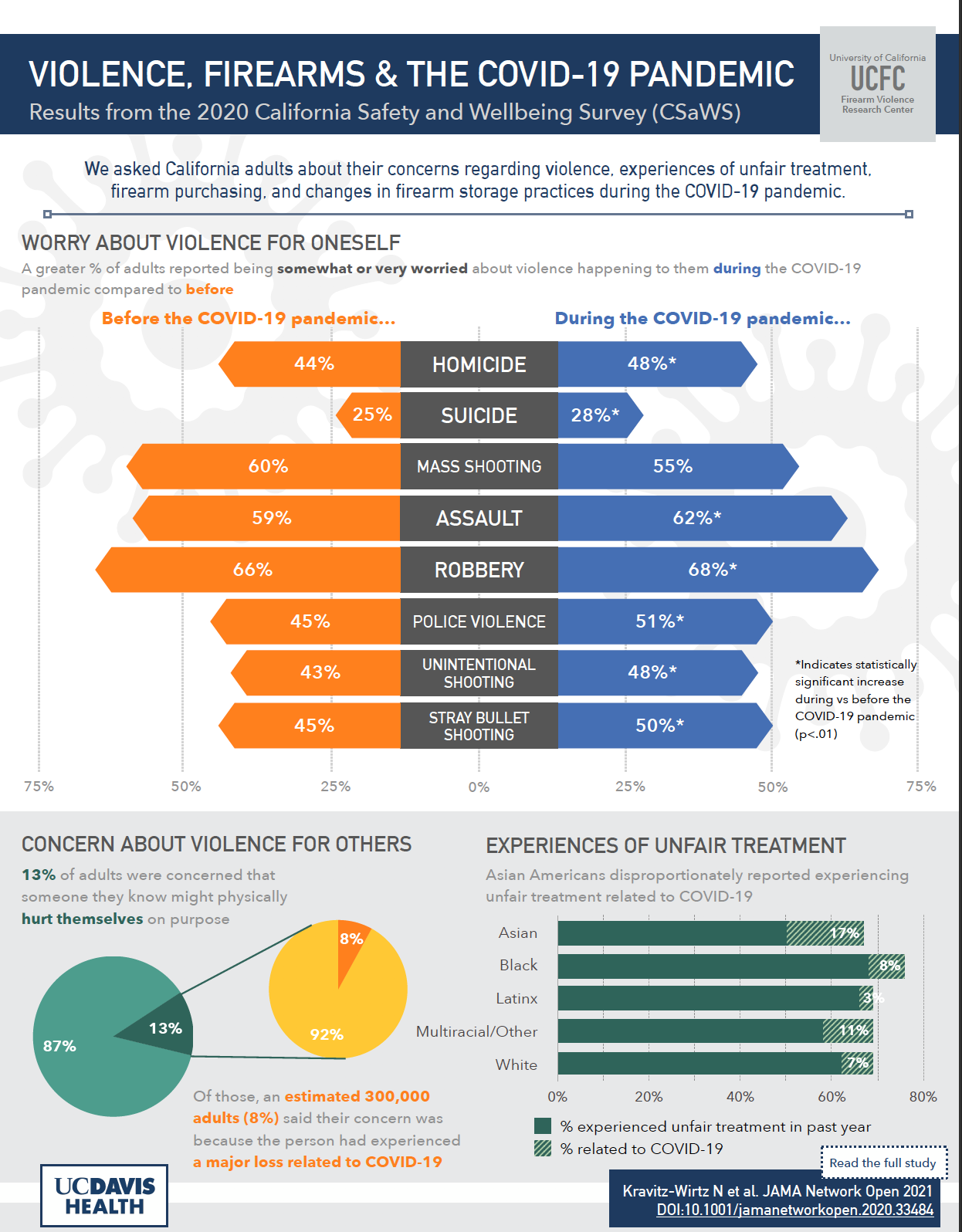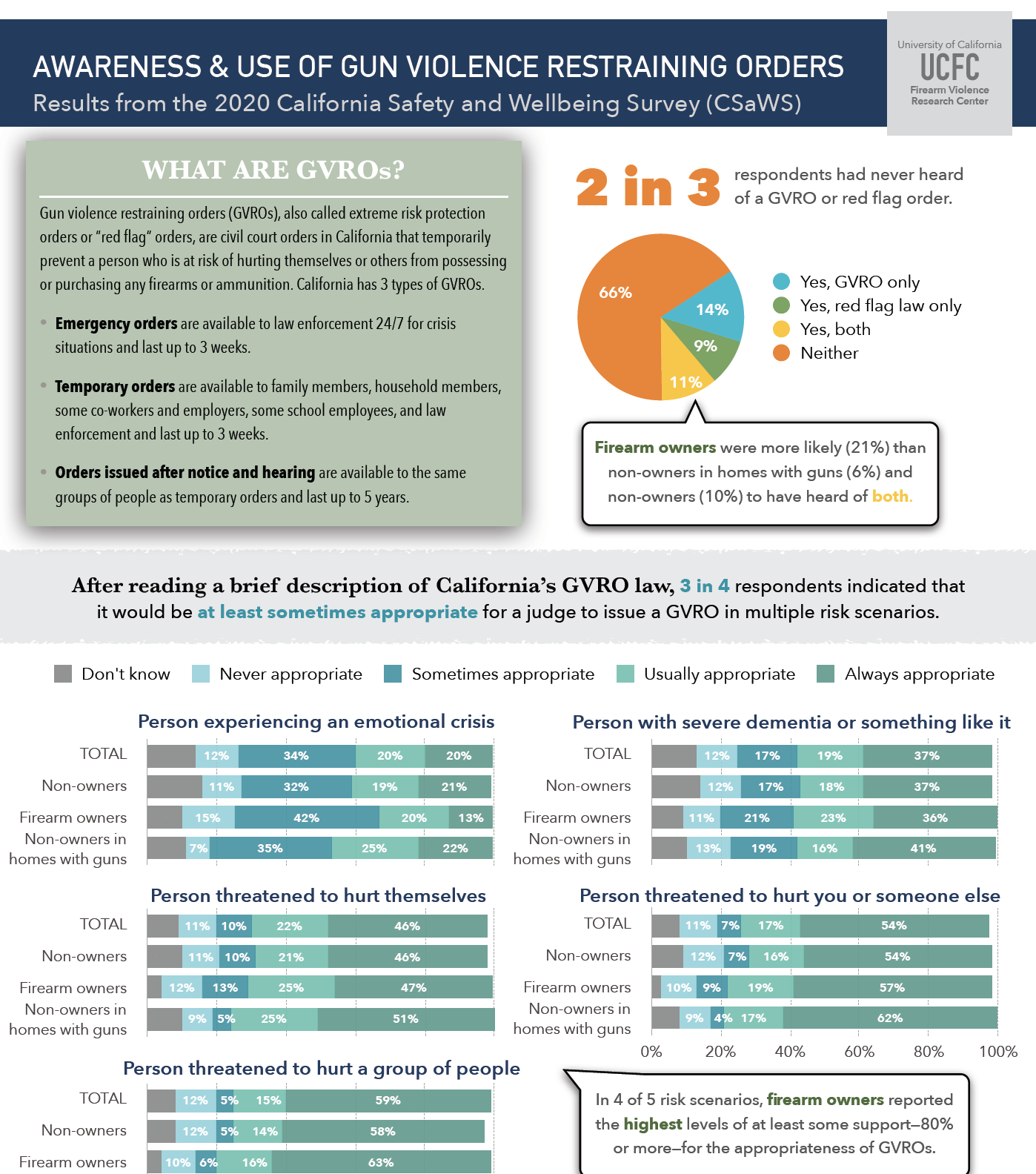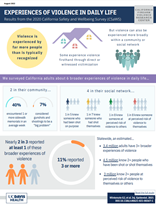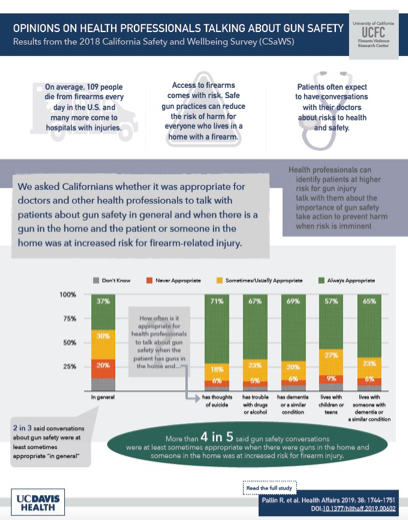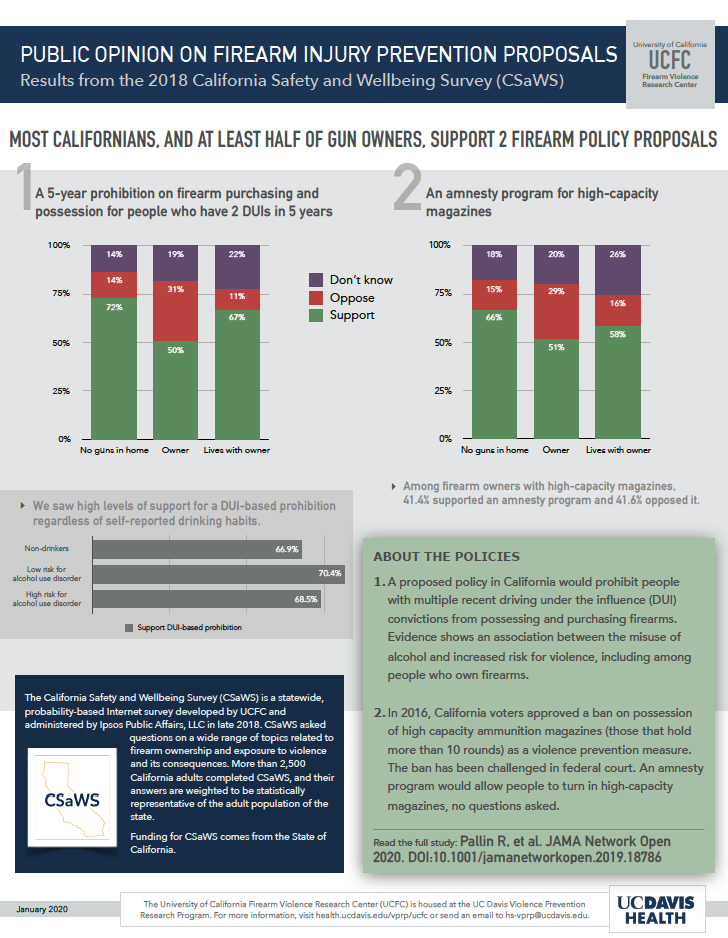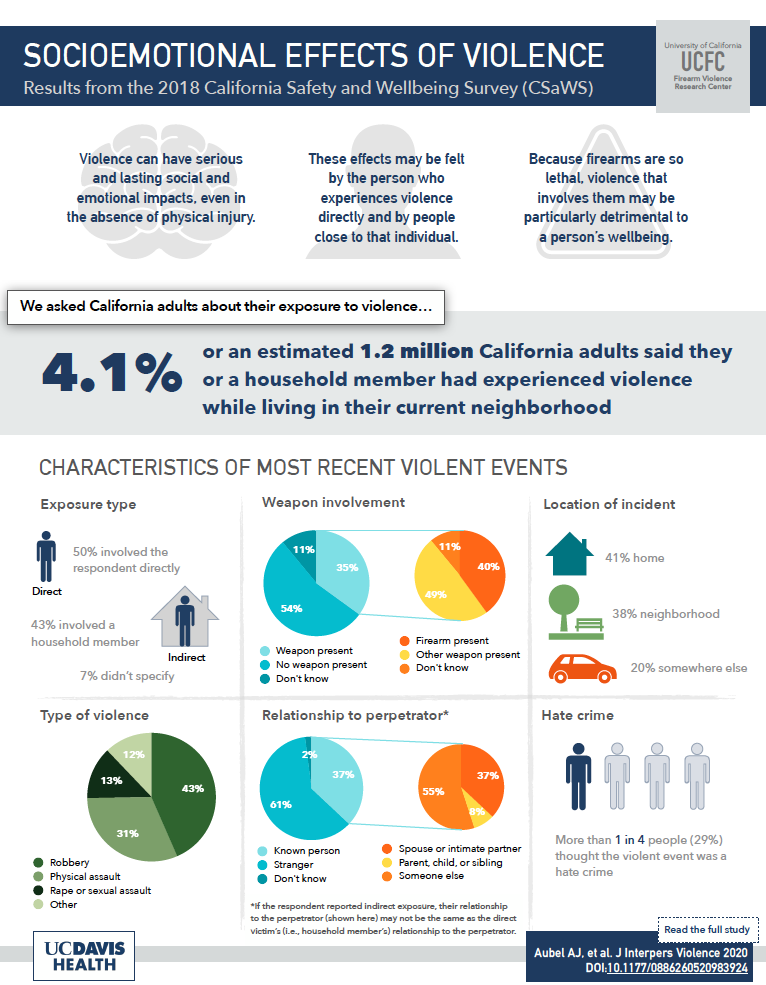California Safety and Wellbeing Survey
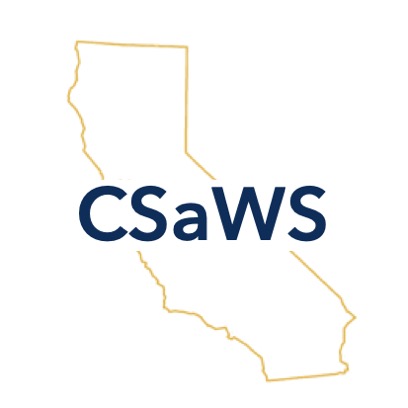
The California Safety and Wellbeing Survey (CSaWS) is an ongoing, all-online survey research project directed by the California Firearm Violence Research Center at UC Davis with funding from the State of California. CSaWS provides detailed and timely state-representative data on a wide range of topics related to firearm ownership, preferences, and practices, and exposure to violence and its consequences.
More than 2,500 California adults participated in CSaWS Wave 1 in 2018 and CSaWS Wave 2 in 2020. The samples are weighted to be statistically representative of the adult population of the state.
CSaWS facilitates quantitative comparisons within California over time and between California and the rest of the country, helps to guide state and local violence prevention and intervention strategies, and serves as a model for similar data collection efforts and data-informed decision-making in other states.
Below you will find links to survey findings in peer-reviewed academic journals, as well as corresponding two-page fact sheets to support your own work.
CSaWS Wave 2 – July 2020
Public Concern About Violence, Firearms, and the COVID-19 Pandemic in California
We looked at associations between the COVID-19 pandemic and changes in individuals’ worry about violence happening to themselves or others, the prevalence of and reasons for firearm and ammunition acquisition, and changes in firearm storage practices and found that the pandemic and efforts to lessen its spread have compounded the public health burden of violence.
View a summary of the results here and read the complete study in JAMA Network Open (January 2021).
Read coverage of these findings in the Los Angeles Times and the New York Times.
Part 1: Public Awareness of and Personal Willingness to Use California's Extreme Risk Protection Order Law to Prevent Firearm-Related Harm
We asked respondents if they had heard of a gun violence restraining order (GVRO) or “red flag” order. Although these tools have been available in California since 2016, two-thirds of California adults had never heard of them. We also assessed respondents’ willingness to use these tools to prevent firearm-related harm, both in general and when a family member is at risk, as well as reasons for being unwilling. After reading a brief description of GVROs, majorities of respondents, including gun owners and non-owners in homes with guns, said they would be somewhat or very willing to use them.
View a summary of the results here.
Read the complete study in JAMA Health Forum (June 2021).
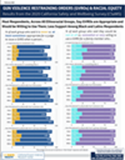 Part 2: Extreme Risk Protection Orders, Race/Ethnicity, and Equity: Evidence from California
Part 2: Extreme Risk Protection Orders, Race/Ethnicity, and Equity: Evidence from California
Most respondents, across all ethnoracial groups, said that gun violence restraining orders (GVROs) are appropriate and would be willing to use them, but support was lower among Latinx and especially Black Californians. Black respondents were also least likely to say they preferred to have the police petition for a GVRO on their behalf. The most common reason for unwillingness to use a GVRO was lack of knowledge, cited by more than half of Asian, Black, and Latinx respondents, followed by perceptions that risk is a personal or family matter and concerns about the system not being fair. Culturally affirming communication, implementation support, and wraparound services from credible messengers may increase GVRO awareness and use, particularly in communities that have experienced harms from sociopolitical and criminal-legal systems and forces.
View a summary of the results here.
Read additional results from GVRO court case files.
Read the complete study in Preventitive Medicine (December 2022).
Experiences of Violence in Daily Life Among Adults in California
Most research on violence focuses on direct or witnessed victimization, but in this study we asked adults in California about their experiences of six broader experiences of violence in their communities and social networks, including hearing gunshots in their neighborhood, encountering a sidewalk memorial to a violent death, and knowing someone at perceived risk of self- or other-directed harm. We found that these broader experiences of violence were widespread, impacting nearly two-thirds of Californians, and occur in sociodemographic patterns that differ from those for direct victimization.
View a summary of the results here.
Read the press release or read the complete study in Injury Epidemiology (January 2022).
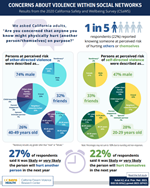 Anticipatory Concerns About Violence Within Social Networks
Anticipatory Concerns About Violence Within Social Networks
One in five California adults personally know someone whom they perceive to be at risk of violence to others or themselves. In this study, we asked respondents to describe the characteristics of the persons at perceived risk of violence, reasons for their concern, likelihood of future violence, actions they took to reduce the risk of violence or their reasons for not taking action. Respondents identified multiple risk factors for violence and perceived warning signs among social network members, usually friends or extended family members, and most reported taking some action to reduce the risk of violence; yet, few acted to reduce the person’s access to firearms or alcohol/drugs.
View a summary of the results here
Read the complete study in Preventive Medicine (January 2023).
CSaWS Wave 1 – September/October 2018
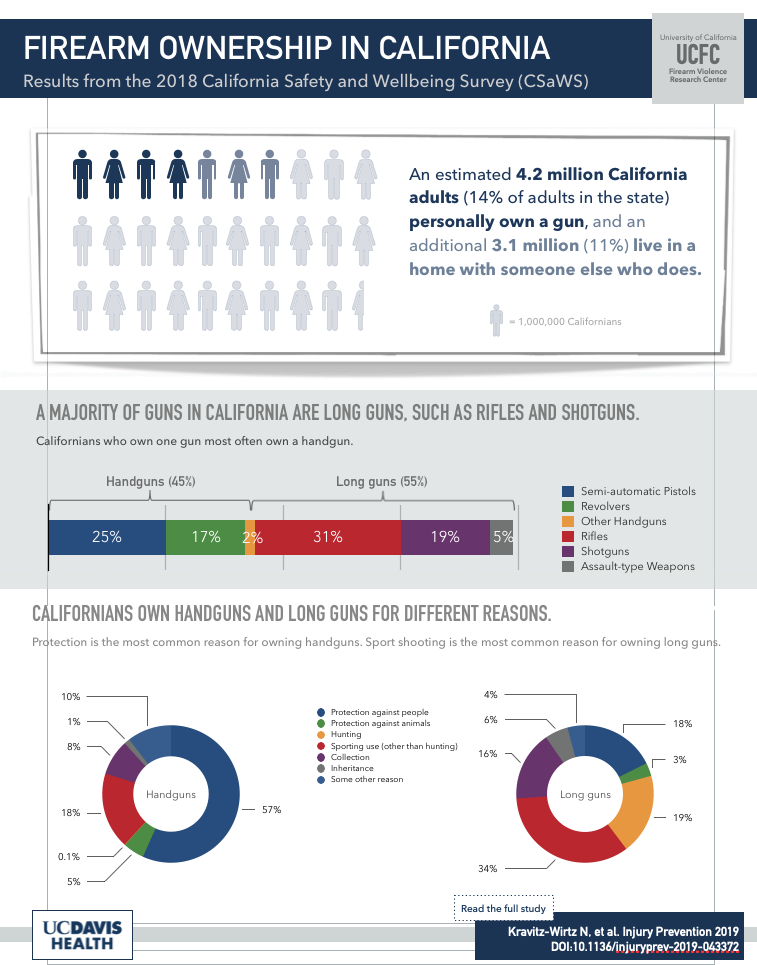 Firearm Ownership and Acquisition in California: Findings from the 2018 California Safety and Wellbeing Survey
Firearm Ownership and Acquisition in California: Findings from the 2018 California Safety and Wellbeing Survey
We asked Californians if they owned firearms and when, where, and how they got them. An estimated 4.2 million California adults personally own a gun, and an additional 3.1 million live in a home with someone else who does.
View a summary of the results here.
Read the complete study in Injury Prevention (December 2019).
California Public Opinion On Health Professionals Talking With Patients About Firearms
We asked Californians how appropriate it is for doctors and other health professionals to talk with their patients about gun safety under a variety of circumstances.
View a summary of the results here.
Read the complete study in Health Affairs (October 2019).
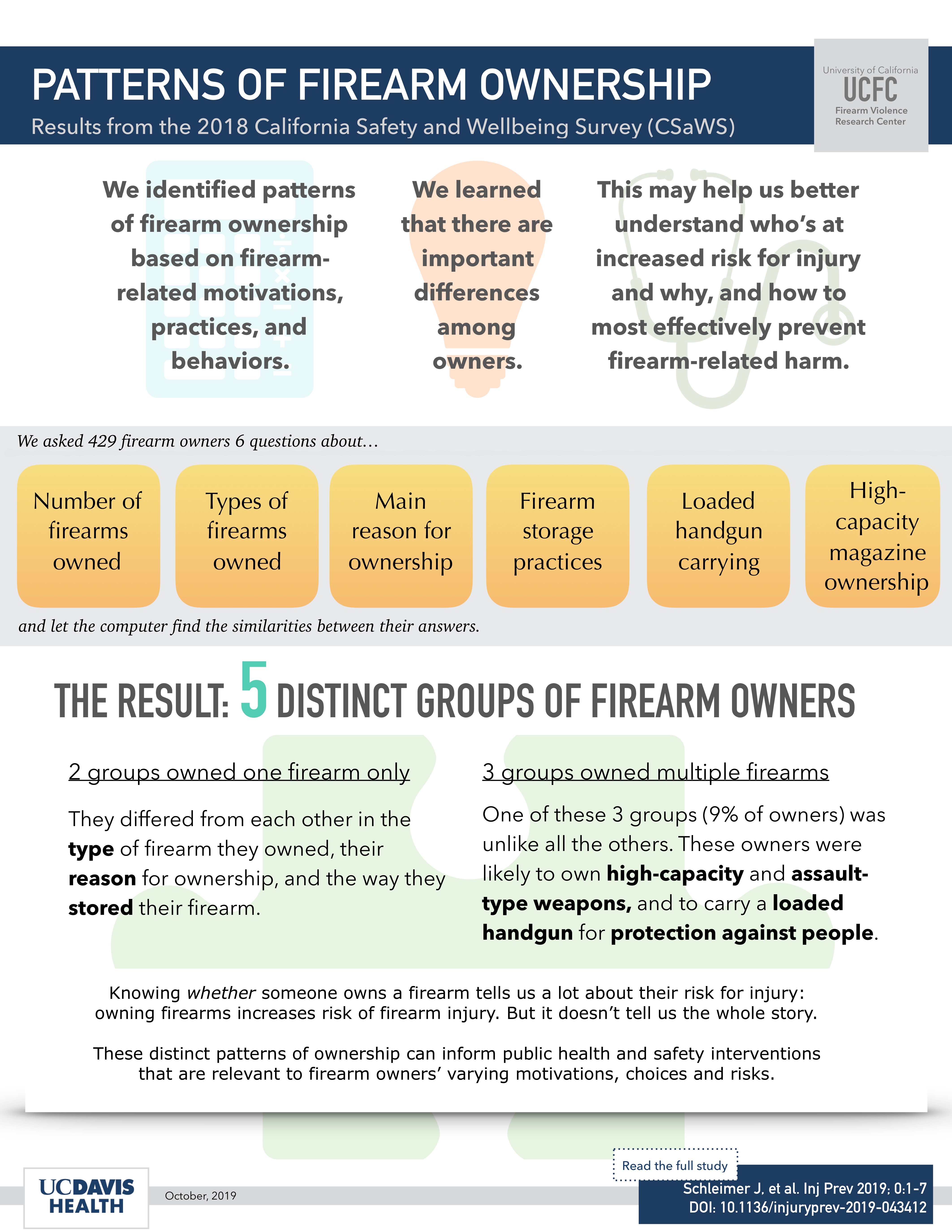 Firearm Ownership in California: A Latent Class Analysis
Firearm Ownership in California: A Latent Class Analysis
We asked people who owned firearms about the types of guns they own, why they own them, and how they store them. Using a statistical technique called Latent Class Analysis, we identified five classes of firearm ownership in California differentiated by these gun ownership-related characteristics.
View a summary of the results here.
Read the complete study in Injury Prevention (October 2019).
Public Opinion On Firearm Injury Prevention Proposals in California
We asked Californians whether they supported or opposed two firearm policy proposals.
View a summary of the results here.
Read the complete study in JAMA Open Network (January 2020).
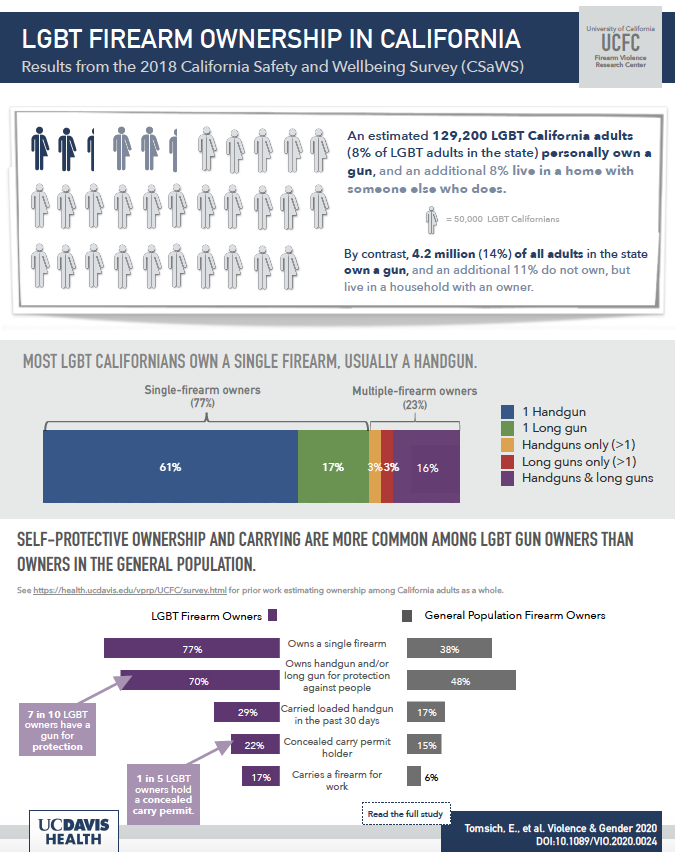 Firearm Ownership Among LGBT Adults in California
Firearm Ownership Among LGBT Adults in California
This study presents results from the first, detailed state-specific examination of firearm ownership among LGBT adult residents of California.
View a summary of the results here.
Read the complete study in Violence and Gender (September 2020).
Exposure to Violence, Firearm Involvement, and Socioemotional Consequences Among California Adults
We asked California adults whether they or someone in their household had experienced violence, whether a firearm was present, and about the impacts on their social and emotional wellbeing.
View a summary of the results here.
Read the complete study in the Journal of Interpersonal Violence (December 2020).
Additional CSaWS Papers
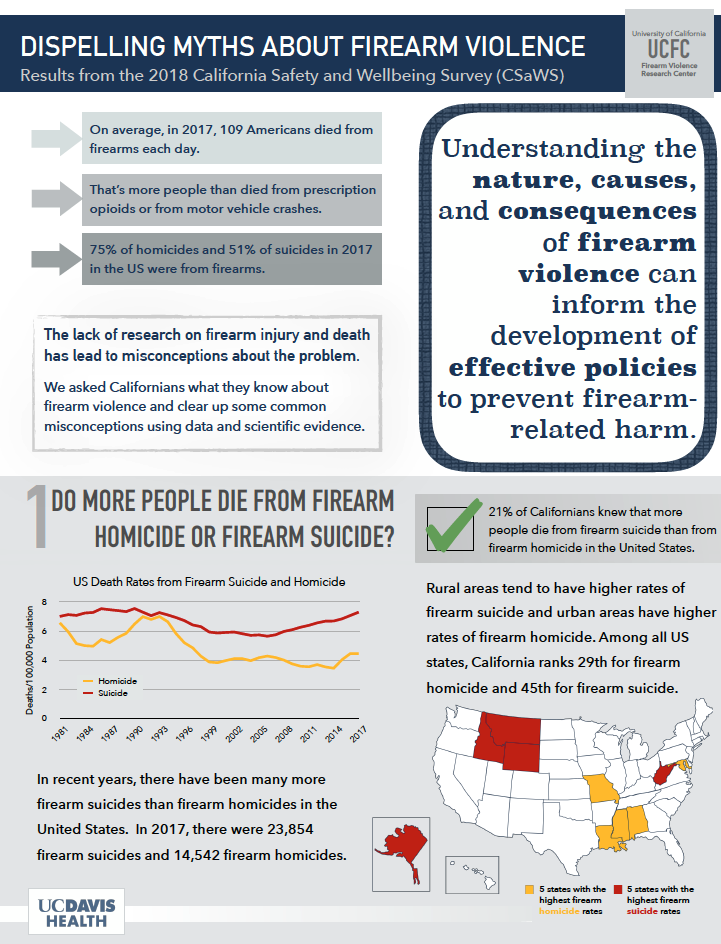 Dispelling Myths about Firearm Violence
Dispelling Myths about Firearm Violence
The lack of research on firearm-related harm contributes to misconceptions about the problem. In the fall of 2018, CSaWS asked Californians what they knew about firearm injury and death: who is dying from firearms, by what intent, and more.
View the myths and truths, last updated in January 2020.

